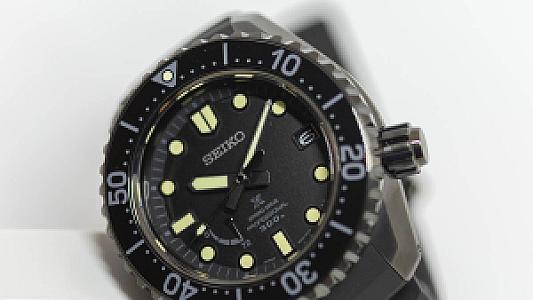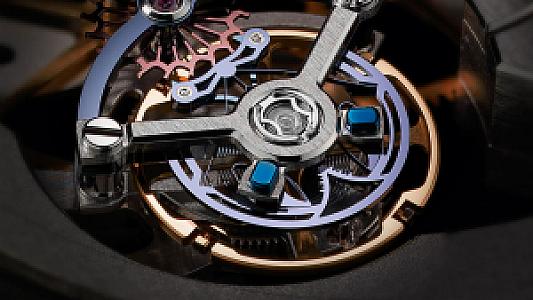
Good and reliable watches were essential requirements for professional divers back in the 60s and 70s when digital dive computers were not really available yet. The market was mostly dominated by two pioneering brands and a pair of their rock solid models: Rolex Sea Dweller and Omega Seamaster. In order to keep up with the growing requirements of the market, Omega decided to collaborate with two legendary figures of the diving world: Comex and Jacques Costeau. The R&D process took almost four years and Omega proudly presented its newest professional dive watch “The Ploprof”. Named after the French translation of professional diver “PLOngeur PROFfessionnel “, that new model was an instant success with its impressive depth rate at 600m. In fact, its water resistance rate was more than the era’s actual submariners and that was approved by the Tarrytown / NY based Ocean System Inc.
Ploprof was retailed at twice the price of Rolex Submariner. Though it was not an important fact for the professional users, it surely blocked the model to be a best seller among its rivals. The watch was a huge success in terms of professional use as its water resistance rating was actually more than the stated 600m. Ploprof performed flawlessly at depths up to 1370m during the test run by Omega. Undoubtedly, this insane depth rating was obtained by the precise engineering of the watch’s mono-block case, crystal and gaskets. Ploprof featured some intelligent design details which were hardly seen on other dive watches. The first one was the bezel lock. Designed to prevent the accidental turn of the bezel ( which may end up causing great trouble for the diver ), Ploprof came with a push button bezel locking system. Unlike conventional dive watch bezels which turn uni-directional only to avoid the accidental turns, Ploprof’s bi-directional bezel was secured with that unique locking system. The second one was the winding crown. The crown was designed to withstand the depth rate and ensure the water tightness of the case. It was also engineered to maintain it’s functionality after being exposed to the most extreme conditions consistently.
Ploprof’s massive case was quite unique back in the day as many men’s models featured 33-38mm diameter range case designs. Considering today’s standards welcoming many oversized models from various major brands, Ploprof seems to be a more civil watch. But unlike the modern oversized timepieces of today which got bigger and bigger for the sake of aesthetics and fashion, Ploprof’s size was all about the professional usage.
After countless successful under water missions, Omega decided to stop the production of the Ploprof. However, they could not stop the watch keeping its iconic status among watch enthusiasts and divers. Well, that interest triggered Omega to come up with a re-issue version of its cult dive watch in 2009. The new Ploprof was a modern version of the classic timepiece which successfully bears great aesthetic resemblance to the original watch. The re-issue version was as tempting as its predecessor while featuring clever and contemporary upgrades. Though the watch’s massive case and oversized dimensions look more normal to the average user, the big watch compatible standards of today was not enough to make the new Ploprof a best seller.
Apparently, professional divers of today are keener to rely on modern dive computers than classic diver’s watches making models like Ploprof to be desired by watch enthusiast only with a strong taste for the unusual.
The 55mm x 48mm x 17,5mm measuring case of Ploprof is made of stainless steel. The total weight of the watch is 272grams including the mesh bracelet. This figure is twice the weight of an average stainless steel watch with a bracelet. Undoubtedly, Ploprof is not the winner for the wearing comfort category. The new version is rated WR1200M but, just like the original timepiece, Ploprof is tested for many more meters. The bezel insert is made of fine ceramics which means it’s not going to fade by UV light/salt water exposure and virtually not going to be scratched either but, it’s prior to shatter upon a strong impact.
The bezel lock is also present at the modern version. In fact, it’s slightly upgraded to be more user friendly. The winding crown design is also pretty clever as the crown guard piece rotates with the crown itself to guarantee the water tightness. The case is not mono-block like the original version as it features a screw-in type solid caseback. There is also a helium valve located just beneath the bezel lock.
The new Ploprof is powered by the Omega’s in-house Co-Axial escapement movement Caliber 8500 which was designed by the late George Daniels. The automatic winding movement offers 60h power reserve when fully wound. Caliber 8500 is a COSC certified movement – which is reported to be more precise than the COSC standards by many happy users.
The bracelet design is another significant detail of the new Ploprof. Just like the original version, the modern Ploprof is offered with two strap options as stainless steel mesh bracelet and rubber strap both featuring diver’s extension for wearing over wetsuits. The mesh bracelet is occasionally called “ Milanese “ which tributes to the production place of the first version’s bracelet Milano-Italy. The rubber strap has three color options as black, orange and white. Though the mesh bracelet appears to be a better choice for the ultimate wrist presence, we might say that it’s not as comfy as the rubber strap. The rubber strap has to be cut to be adjusted therefore you need to be very careful while doing the adjustment thing. If you are already wondering about the other strap options, we would strongly recommend you to try the Isofrane band.
Ploprof can be a spot-on option for the watch enthusiasts looking for a seriously professional dive watch with an interesting heritage and a solid brand reputation. However, wearing comfort is a deal breaker here so you better avoid on-line shopping for this one.





